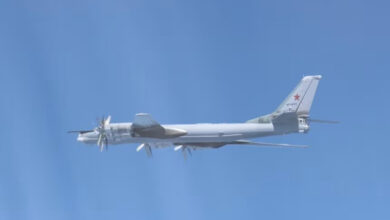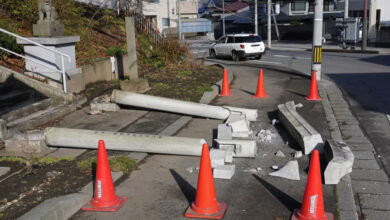Tokyo — Australia, Canada and Singapore joined a list of countries shunning Japanese food imports as radioactive steam wafted anew from a disaster-struck nuclear plant, straining nerves in Tokyo.
The grim toll of dead and missing from Japan's monster quake and tsunami on 11 March topped 25,000, as hundreds of thousands remained huddled in evacuation shelters and fears grew in the megacity of Tokyo over water safety.
The damage to the Fukushima nuclear plant from the tectonic calamity and a series of explosions has stoked global anxiety. The United States and Hong Kong have already restricted Japanese food, and France wants the EU to do the same.
Australia on Thursday also ordered a halt to food imports from four prefectures near the charred plant 250km (155 miles) northeast of Tokyo, including seaweed and seafood, milk, dairy products, fresh fruit and vegetables.
It said, however, that Japanese food already on store shelves was safe, as it had shipped before the quake, and that "the risk of Australian consumers being exposed to radionuclides in food imported from Japan is negligible."
Singapore also suspended imports of milk products and other foodstuffs from the same four prefectures — Fukushima, Gunma, Ibaraki and Tochigi — and Canada implemented enhanced import controls on products from the quartet.
"Food safety issues are an additional dimension of the emergency," said three UN agencies in a joint statement issued in Geneva, pledging they were "committed to mobilizing their knowledge and expertise" to help Japan.
Japan was taking the right actions, said the International Atomic Energy Agency, World Health Organization, and Food and Agriculture Organization.
"Food monitoring is being implemented, measurements of radioactivity in food are taking place, and the results are being communicated publicly."
In greater Tokyo, an urban sprawl of more than 30 million people, three strong aftershocks overnight served as uncomfortable reminders that Japan's capital itself is believed to be decades overdue for a megaquake.
The anxiety was compounded by the Tokyo government's revelation that radioactive iodine in the capital's drinking water was now more than twice the level deemed safe for infants, although it remained within safe adult limits.
The news triggered a run on water bottles in shops and the city's ubiquitous vending machines, while the Tokyo government said it would give families three 550-millilitre (18.5-ounce) bottles of water per infant.
Osaka resident Yuko Yamaguchi, a mother of one, said her younger sister in Tokyo had emailed her to say that she was "very concerned."
"She said she was scared. And she doesn't have much more stock (of bottled water) available. She wants me to send her supplies," Yamaguchi told AFP at a fresh food market in Osaka.
Tokyo authorities said Wednesday they had measured 210 becquerels of radioactive iodine per 1.0 kilogram of water — more than the 100 becquerel limit for infants, but below the 300 becquerel ceiling for adults.
Japan's government has also halted shipments of untreated milk and vegetables from Fukushima and three adjoining prefectures, and stepped up radiation monitoring at another six, covering an area that borders Tokyo.
The health ministry has detected 82,000 becquerels of radioactive ceasium — 164 times the safe limit — in the green vegetable kukitachina, and elevated levels in another 10 vegetables, including cabbage and turnips.
At the source of the radiation — the Fukushima plant located on the Pacific Coast — white smoke could be seen on television images wafting from four of the six reactors.
Fire engines again aimed their high-pressure water jets at the number three reactor, a day after a plume of dark smoke there forced workers to evacuate, in their bid to avert a full meltdown that would release greater radiation.
Engineers have now linked up an external electricity supply to all six reactors and are testing system components and equipment in an effort to soon restart the tsunami-hit cooling systems and stabilize the reactors.
On Thursday, they partially restored power to the reactor one control room.
The grim statistics from Japan's worst post-war disaster kept rising, with 9523 now confirmed dead and 16,094 listed as missing by national police.




